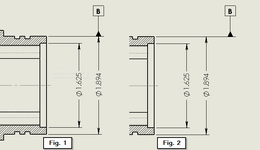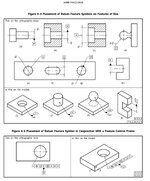Greetings Forum, I have a simple question about the placement of a datum symbol for a cylindrical feature: Is there any difference in the datum defined by Datum Feature B as indicated in the two figures below? Is either acceptable or only fig. 1?

I know that if the 1.894 dimension was the distance between two planar surfaces instead of a cylinder diameter, then these mean very different things, but what about for a cylinder?
Thanks!

I know that if the 1.894 dimension was the distance between two planar surfaces instead of a cylinder diameter, then these mean very different things, but what about for a cylinder?
Thanks!

